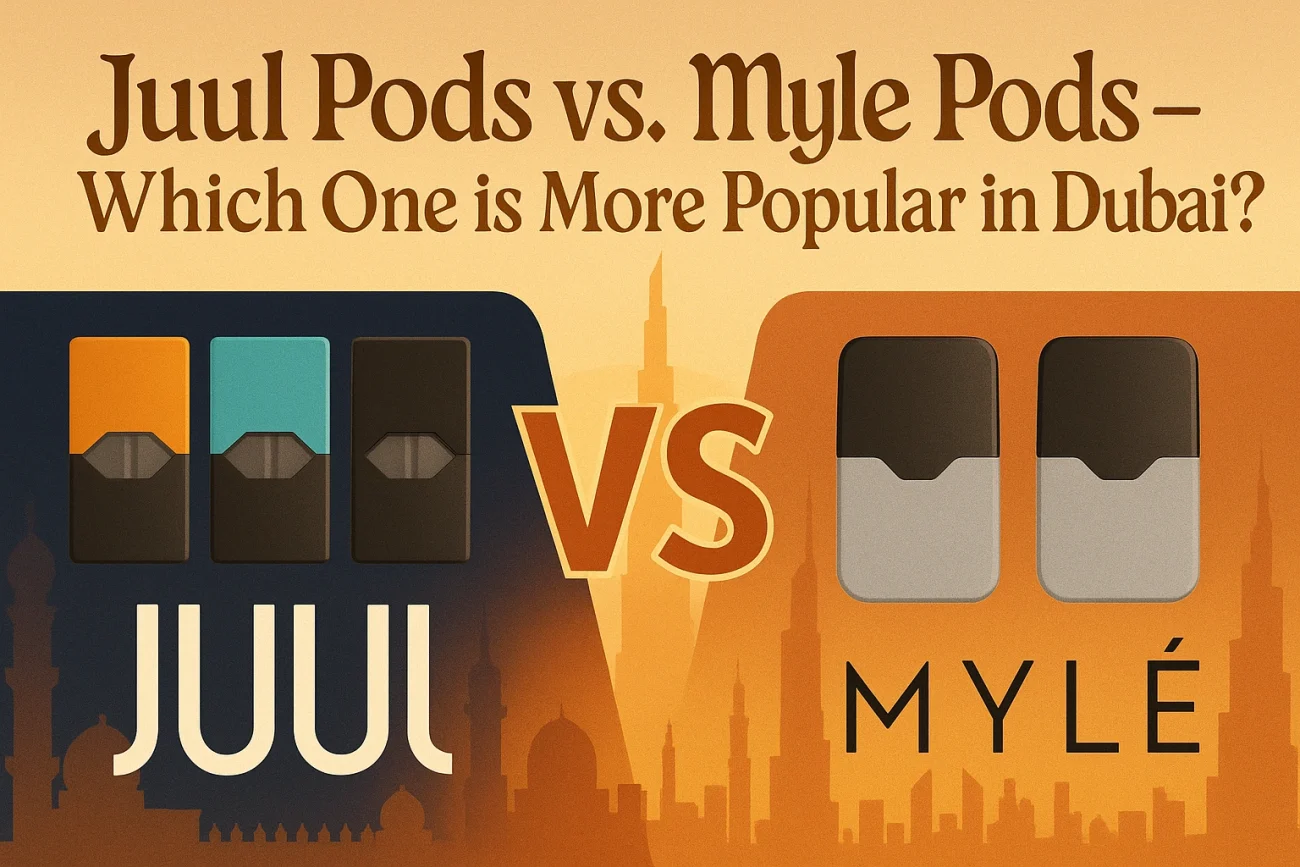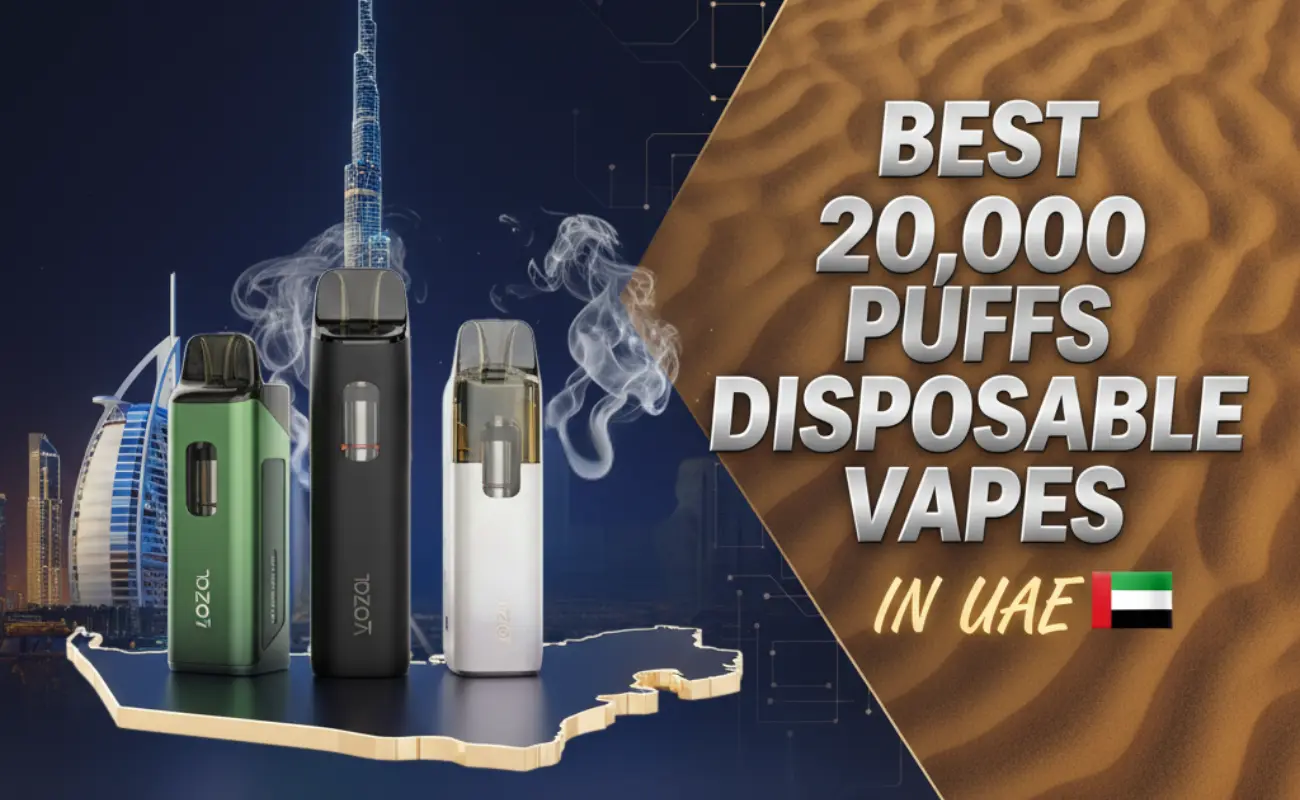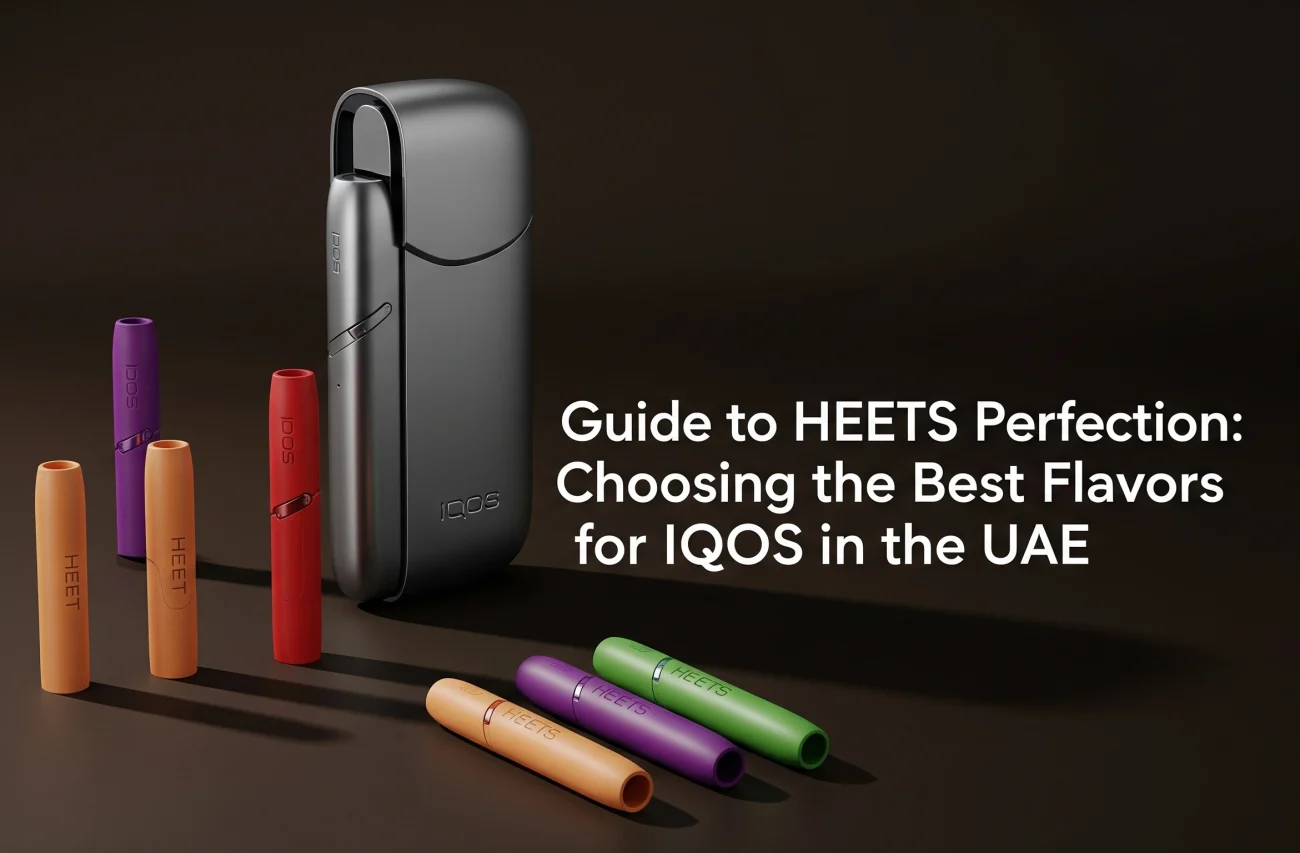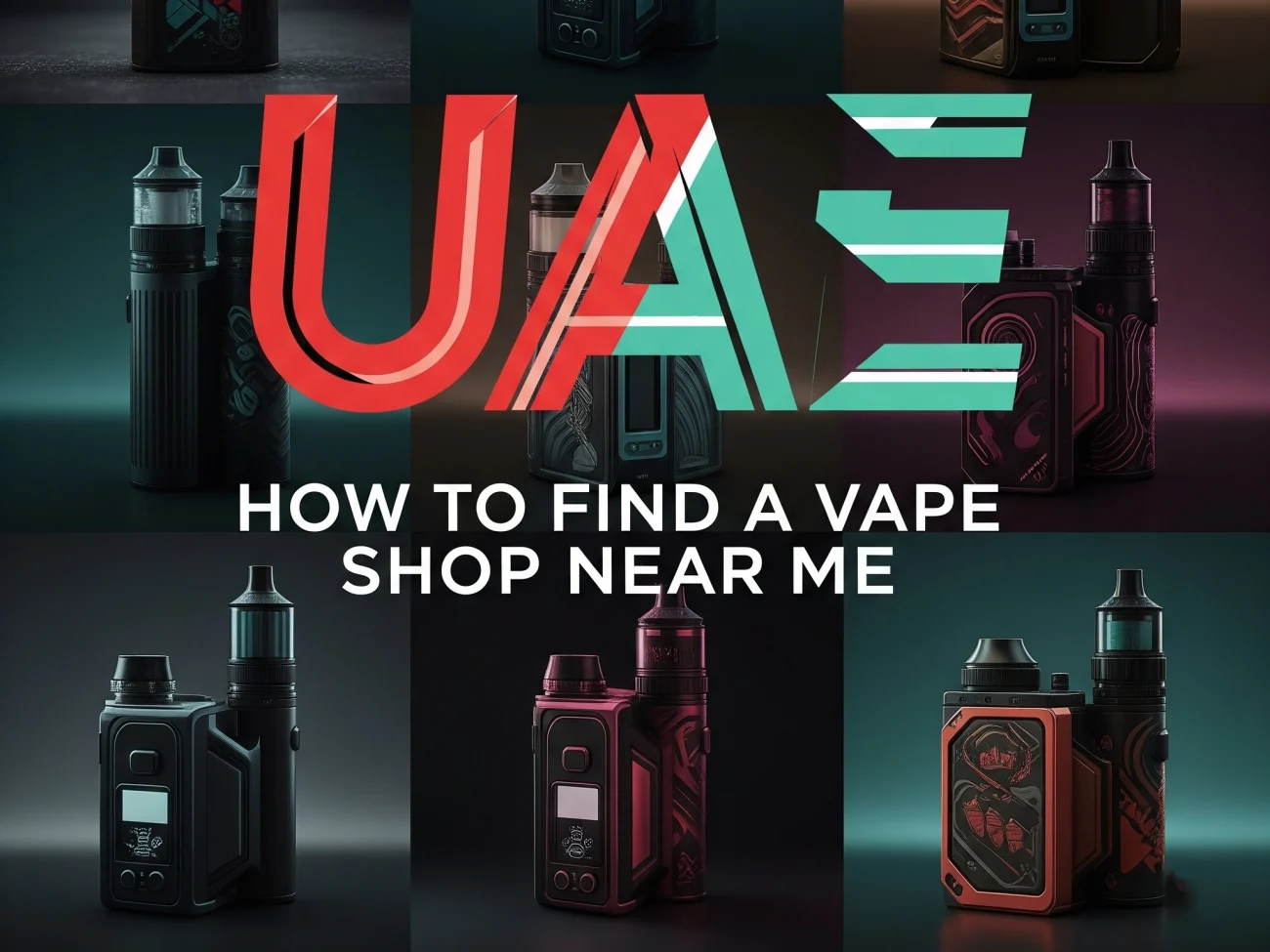Market Growth Forecast: Vaping Industry in the Middle East Through 2030
Vaping has become a significant topic of debate worldwide, particularly concerning health, regulation, and cultural acceptance. In the Middle East, this modern phenomenon raises numerous questions about its future. The vaping landscape here is shaped by diverse factors, including various regulatory approaches and evolving market dynamics.
The legal frameworks governing vaping across the Middle East differ greatly, impacting market behavior and consumer habits. Some countries, like the UAE, enforce strict regulations, while others adopt a more lenient approach, reflecting a complex regulatory environment. Notably, Egypt emerges as a major player in the vaping market, indicating consumer preferences that are reshaping regional trends.
Beyond market dynamics, public health concerns inspire important discussions about the benefits and risks of vaping compared to traditional smoking. Meanwhile, technological advances continue to drive industry innovation. Environmental impacts, such as challenges posed by disposable vapes, also require attention. This article examines these complex issues, exploring the future of vaping in the Middle East through cultural, legal, and technological lenses.

Legal Landscape and Regulations
The vaping industry in the Middle East is on a notable upward trajectory. Despite the growth, regulatory environments across the region remain varied and complex. Cultural traditions, economic considerations, and public health objectives shape these policies, impacting the expansion of the vaping market. Countries such as Qatar have completely banned the production, sale, and importation of e-cigarettes, reflecting a stringent stance against vaping. Conversely, other nations like Jordan allow the sale under specific restrictions, emphasizing consumer safety through health warnings and advertising limitations. In 2024, the Middle East and Africa’s share of the global vape market was valued at USD 563.04 million, with a forecasted growth rate of 30.7% through 2031, indicating a burgeoning acceptance of vaping despite regulatory hurdles.
Overview of E-cigarette Regulations in the Middle East
Across the Middle East, the regulation of e-cigarettes is characterized by a mix of prohibitive and permissive measures. The United Arab Emirates (UAE), for instance, allows the sale of e-cigarette products, but under rigorous controls. Sales are confined to licensed pharmacies and specialized vaping stores, ensuring that access to these items is regulated. In Dubai, the sale of vape products through general retail outlets is strictly forbidden to minimize the risk of access by minors. This controlled distribution is part of a larger effort to mitigate potential health risks associated with vaping. Despite the stringent regulations in place, the popularity of vaping continues to rise in the region, particularly among the younger population drawn to the perceived lower health risks compared to traditional tobacco products.
UAE’s Stringent Vaping Laws and Restrictions
The UAE has implemented a robust regulatory framework to manage the distribution and consumption of vaping products. Smoking e-cigarettes inside vehicles with passengers, especially children, is prohibited to protect against secondhand exposure. Regulatory changes initiated in November 2019 allow mainland LLCs to trade electronic cigarettes and accessories under specific categories, illustrating a shift in governmental policy. The Emirates Government, through the Emirates Standardization and Measurement Authority (ESMA), has established regulations to standardize the marketing practices for e-cigarettes in Dubai. Prior to these changes, the sale of such products in Dubai was illegal, showing a significant regulatory shift. Legal products must adhere to stringent standards, including the presence of health warnings on packaging, ensuring consumer awareness of potential health impacts.
Age Limits and Advertising Regulations
To safeguard minors from the risks of nicotine addiction, the UAE enforces strict age limits on the sale and provision of vaping products. It is illegal to sell these products to anyone under the age of 18, aligning with global efforts to control nicotine product access among younger demographics. These age restrictions are integral to the country’s broader strategy to curb underage vaping. By ensuring compliance with these regulations, authorities aim to nurture a responsible vaping environment and encourage safe practices within the growing vaping community. Adherence to advertising restrictions further underscores the nation’s commitment to protecting public health while navigating the delicate balance of market growth and consumer safety in the vaping sector.
Market Trends in the Middle East
The vaping market in the Middle East is poised for substantial growth, with predictions indicating a robust uptick in consumer interest and market development. Currently, the Middle East and Africa represent about 2% of the global vaping market. However, with a predicted market size of USD 563.04 million in 2024, this region is expected to see a remarkable compound annual growth rate (CAGR) of 30.7% from 2024 to 2031. This expansion is largely driven by the perception of vaping as a healthier alternative to traditional tobacco products, particularly among the younger demographics. The Middle East’s vaping market dynamics are molded by a unique interplay of cultural, economic, and regulatory parameters, differentiating its growth trajectory from other regions. Consumers in this area predominantly purchase e-cigarette devices and e-liquids through various distribution channels, including both offline and online platforms. The regulatory landscape across the Middle East varies significantly, with some markets exhibiting fewer restrictions, facilitating rapid product innovation and diversification.
Egypt as a Dominant Market Player
Egypt stands out as a leading player in the Middle East’s vaping market, leveraging both its rich cultural history and a burgeoning awareness of vaping’s benefits. Historically, Egyptians have engaged in practices akin to vaping, such as using healing herbs and oils on hot stones. This historical context complements the modern perception of vaping in Egypt as a potential aid for smoking cessation. Indeed, 41.6% of surveyed Egyptians believe e-cigarettes assist in quitting traditional smoking. Moreover, 31.9% of respondents consider e-cigarettes to be less harmful than conventional cigarettes, reflecting a significant shift in consumer attitudes toward vaping.
Egyptian vendors are capitalizing on this trend by developing innovative vape products that cater to varied consumer preferences. These products range in functionality, flavors, ingredients, packaging, and formats, responding directly to the diverse demands of the market. The rising consumer awareness in Egypt strongly contributes to the rapid growth of the vaping industry in the region, positioning Egypt as a key player in shaping vaping trends and preferences throughout the Middle East.
Consumer Preferences and Regional Trends
The emergence of vaping as an appealing alternative to traditional smoking is fuelling diverse consumer preferences and trends across the Middle East. With a projected CAGR of 30.7% from 2024 to 2031, the market anticipates a surge in demand for vaping products. The market size is expected to expand significantly, with projections for the Middle East & Africa e-cigarettes market reaching USD 152.12 million by 2025. This growth is reflective of increased consumer interest in innovative products that offer convenience and advanced features.
For instance, products like the VOZOLs Star 12000, which boasts features such as shake-sensing interaction technology, exemplify the type of advanced and convenient vaping products in high demand. This innovation underscores the shift in consumer behavior toward seeking technologically savvy and user-friendly vaping solutions. The rising awareness of the health risks associated with traditional smoking further bolsters the appeal of vaping, particularly among youth and young adults who are increasingly seeking healthier alternatives. The market dynamics in this region are complex, influenced by cultural, economic, and regulatory factors, which in turn shape distinctive consumer preferences and trends in vaping.
Public Health Considerations
The future of vaping in the Middle East is intricately linked to public health considerations, as countries implement and refine regulations to address health concerns. The United Arab Emirates (UAE) serves as a benchmark in this regard, having established stringent guidelines aimed at minimizing potential harms, particularly among the younger population. Across the region, authorities are showing a growing willingness to embrace regulatory frameworks that echo the UAE’s approach, underscoring the importance of safeguarding public health. Despite the evolving regulatory landscape, there remains a considerable gap in comprehensive research specific to the health impacts of e-cigarettes in Middle Eastern countries. Such research is crucial for formulating evidence-based policies that balance the potential benefits and risks of vaping. As ongoing studies explore these health implications, they will significantly shape future regulations and the direction of the vaping industry in the region.
E-cigarette Use vs. Traditional Smoking
E-cigarettes have emerged as a popular alternative to traditional smoking, offering a potentially less harmful experience due to the reduced presence of noxious chemicals compared to traditional tobacco smoke. These battery-operated devices vaporize a liquid solution that often contains nicotine, catering to those seeking a smoking cessation tool or a different nicotine product. In Middle Eastern countries like Egypt, perceptions are shifting as 41.6% of people see e-cigarettes as aids in quitting smoking, while 31.9% consider them less harmful than traditional cigarettes. The Middle East’s landscape for e-cigarette use continues to evolve with high-performance products such as the Star 12000 by VOZOL. However, the market faces challenges, such as the need for standardized measurement tools in research and an overreliance on specific samples, underscoring the importance of diverse and comprehensive studies to fully understand consumer behaviors and benefits.
Public Health Debates and Concerns
Public health discussions in the Middle East around vaping are characterized by varied perceptions and attitudes, often focusing on adult usage while neglecting the youth perspective. These debates are influenced by global regulatory practices, including the approaches from the UK and the US that focus on health warnings and restricting youth access through measures like flavor bans. As the health risks associated with traditional smoking become more widely acknowledged, vaping is often perceived as a safer option, especially among younger demographics. However, more research is needed to address limitations like reliance on university-based samples and inadequate measurement tools. Such efforts will not only clarify the complexities within the debate but also help shape effective public health policies and consumer perceptions. As both independent and industry-led studies continue to assess the health effects of vaping, their findings will be crucial in guiding the future trajectory of vaping regulations and public health strategies in the region.
Technological Advancements in Vaping
The vaping landscape in the Middle East is witnessing a technological revolution, marked by rapid innovation and adaptation. Dive into any Middle Eastern market, and you’ll notice a trend: a myriad of advanced vaping devices are reshaping consumer experiences. Recent technological breakthroughs not only enhance user convenience but also expand the usability of vaping products. Notably, the introduction of the Star 12000 vape device employs shake-sensing interaction technology. This innovation points to a future where user interaction becomes as intuitive as traditional habits. With Middle Eastern markets operating under less restrictive regulations than regions like the European Union, these areas are ripe for technological diversification and growth. The compound annual growth rate for the Middle East and Africa vaping market is projected at an astounding 30.7% from 2024 to 2031, highlighting the region’s potential as a hub for vaping innovation. Shenzhen-based VOZOL’s success in deploying high-capacity disposable vape devices further underscores the regional receptivity to such advancements.
Role of Research and Development
In the Middle East, research and development (R&D) have become vital for propelling the vaping industry forward. The region, with its relatively lenient regulatory environment compared to other parts of the world, provides fertile ground for innovation and diversification in vaping products. This focus on R&D within the industry is driven by a need to enhance product quality, safety, and user convenience. Innovations like shake-sensing interaction technology showcase these efforts. However, to sustain this growth, there is an imperative for ongoing research that addresses gaps in knowledge, particularly related to the health effects of e-cigarette use. Industry events such as the World Vape Show in Dubai highlight a collaborative approach in R&D, where stakeholders discuss vaping research and public health impacts. These forums not only inform public opinion but also guide future product development, ensuring that health and safety remain a top priority.
Innovations in E-cigarette Technology
Technological advancements in e-cigarette technology continue to evolve as investments in research and development drive significant innovations. These advancements are focused on integrating elements like nanotechnology, bioengineering, and artificial intelligence to create smarter, more efficient e-cigarettes. The future of vaping technology is characterized by continuous improvements in performance, efficiency, and safety of devices and e-liquids. This includes the introduction of high-performance products with diverse flavors, ingredients, and packaging to cater to varied consumer preferences. E-cigarette manufacturers are stepping up to develop products that not only meet but anticipate consumer needs, ensuring the market remains vibrant and dynamic. Additionally, important insights drawn from independent studies and industry-sponsored research play a substantial role in guiding these technological advancements, particularly in terms of assessing long-term safety and health implications. As the industry progresses, these innovations promise to redefine the vaping experience, making it more aligned with consumer expectations and regulatory standards.
Environmental Concerns
The vaping industry in the Middle East is undergoing significant transformations, driven by a growing emphasis on sustainability and environmental consciousness. As vaping continues to gain popularity as a healthier alternative to traditional smoking, there is increasing scrutiny on the environmental impact of vaping products. This has led to a surge in the development and adoption of sustainable materials and designs. Manufacturers are focusing on eco-friendly solutions such as refillable pods and recyclable packaging to meet the demands of environmentally conscious consumers. By reducing waste and using sustainable materials, the industry aims to mitigate its environmental footprint. Personalized vaping experiences are also trending, allowing consumers to customize their vaping devices to align with personal preferences while adhering to eco-conscious standards. Such innovations not only cater to consumer desires for customization but also contribute positively to environmental sustainability.
Impact of Disposable Vapes
The increasing demand for innovative vaping products such as disposable vapes, exemplified by the recent introduction of the Star 12000 disposable vape in the Middle East market, highlights both the opportunities and challenges for the industry. While these products cater to consumer preferences for convenience and portability, they pose significant environmental challenges. Improper disposal of disposable vapes can lead to the leakage of harmful substances like cobalt and copper into ecosystems. Such environmental concerns have already prompted some regions to impose bans on disposable vapes.
Despite these challenges, the global vaping market is growing, with the Middle East and Africa occupying sizable market shares. New trade policies and international tariffs are influencing market dynamics, allowing disposable vapes to capture a greater consumer base. Nonetheless, the lack of rigorous research and standardized methodologies to measure e-cigarette use among youth in the Middle East remains a barrier. As disposable vapes become more prevalent, it is critical to undertake comprehensive studies to better understand and manage their impact on youth and the environment.
Addressing Environmental Challenges
To address the environmental challenges posed by vaping, the industry is leaning heavily toward sustainable innovation. The future of vaping is expected to focus on the use of eco-friendly materials and designs, addressing the pressing need for environmental responsibility. Refillable pods are increasingly popular, offering a sustainable alternative to their disposable counterparts. This shift not only reduces waste but also appeals to environmentally conscious consumers.
Moreover, vaping products are expected to incorporate more recyclable packaging to decrease their ecological footprint. Devices crafted from sustainable materials are anticipated to become common, highlighting the industry’s move towards eco-consciousness. These efforts showcase the industry’s resolve to mitigate its negative impact on the environment while adapting to evolving market dynamics.
Through innovative product designs and a commitment to sustainability, the vaping industry is setting a precedent for reducing its environmental impact. This transition not only aligns with the growing global emphasis on eco-friendly practices but also marks a significant step toward a more responsible future for vaping in the Middle East.
Challenges and Opportunities
The future of vaping in the Middle East presents a unique set of challenges and opportunities as the region navigates a fast-evolving market landscape. On one hand, the market is poised for substantial growth, with predictions indicating a compound annual growth rate of 30.7% from 2024 to 2031 across the Middle East and Africa. This surge is fueled by growing awareness of the health risks associated with traditional smoking, leading many, particularly younger demographics, to view vaping as a viable alternative. However, the regulatory environment remains a hurdle, with varying degrees of restriction shaping market dynamics in countries like the United Arab Emirates, Saudi Arabia, and Qatar. These regulations, alongside cultural perceptions and the limited research on vaping behaviors in the region, present both a challenge and an avenue for growth and adaptation for businesses aiming to capture the largest market share.
Cultural Influences on Vaping
Cultural norms and traditions have a significant impact on vaping trends in the Middle East. The region has historically integrated various methods of consuming smoke-like substances, with ancient practices such as using healing herbs and oils on hot stones in Egypt. As vaping gains popularity in the Middle East, it is met with mixed reactions, influenced by cultural and religious contexts. While younger generations are increasingly open to e-cigarette products as healthier alternatives to traditional cigarettes, older generations remain wary. This cultural shift signifies a transition in consumer preferences, although adherence to Islamic principles continues to shape public perception and acceptance of vaping. In balancing modernization with tradition, the Middle East sees vaping as both a contemporary lifestyle choice and a topic for cultural discussion, underlining the complexity of vaping adoption in the region.
Legal and Technological Impacts
Legal and technological factors play a pivotal role in the future of vaping across the Middle East. Qatar exemplifies a strict regulatory stance, prohibiting the manufacture, sale, distribution, display, and import of e-cigarettes entirely. Conversely, Jordan offers a more lenient framework, allowing sales and use with specific restrictions like health warnings and advertisement bans. Meanwhile, the United Arab Emirates is evolving its regulations to address the burgeoning interest in vaping, implementing precise age restrictions and curbs on advertising. These legal environments are both barriers and catalysts for innovation, influencing where and how vaping flourishes in the region.
On the technological front, advancements in artificial intelligence, nanotechnology, and bioengineering promise to drive the next wave of innovation in the vaping industry, enhancing product safety and efficiency. This innovative landscape encourages the development of new, safer devices, which are likely to gain favor among health-conscious consumers. Moreover, comprehensive research, both independent and within the industry, is anticipated to provide crucial insights into health implications, informing regulatory policies and product advancements. As these technological and legal dynamics unfold, they present a complex interplay of challenges and opportunities for stakeholders in the Middle Eastern vaping market.
The Future Outlook
The Middle East vape market is poised for significant growth in the coming years, with a remarkable compound annual growth rate (CAGR) projected at 30.7% from 2024 to 2031. By the year 2024, the market size in the Middle East and Africa is expected to reach USD 563.04 million, representing a notable portion of the global vape market. This growth is largely attributed to the increasing popularity of vaping as a healthier alternative to traditional smoking, especially among the younger demographic in the region. As the sector continues to innovate with advanced technologies like shake-sensing interaction, the market dynamics are likely to experience a shift towards more sophisticated and consumer-friendly products. However, understanding these evolving patterns, particularly among youth and young adults, remains a priority for future research initiatives to ensure responsible consumption.
Evolving Trends and Predictions
Vaping is increasingly becoming a favored alternative to traditional tobacco use in the Middle East, driven by its appeal to younger audiences who seek healthier lifestyle choices. This shift is mirrored in the projected vape market size for the Middle East and Africa, anticipated to reach USD 563.04 million by 2024. The region is expected to experience rapid innovation and diversification in vaping products, given the lighter regulatory landscape compared to other global markets. Notably, in October 2023, VOZOL introduced the Star 12000 with groundbreaking shake-sensing technology, setting a precedent for future product innovations. However, to better navigate this evolving landscape, research efforts must focus on closing existing knowledge gaps, especially regarding youth vaping trends. Addressing these research needs will be essential in comprehending the social and health implications of vaping in the region.
Strategic Directions and Market Potential
The vaping market in the Middle East holds significant potential, with projections indicating an impressive compound annual growth rate of 30.7% from 2024 to 2031. As part of the global market, this region is set to capture up to 2% of total market revenue, underlining its strategic importance. The introduction of innovative products like VOZOL’s Star 12000, which features advanced shake-sensing interaction technology, underscores the Middle East’s embrace of technological advancements and enhanced user experiences in vaping devices. Cultural, economic, and regulatory influences also play a crucial role in shaping market dynamics, presenting both challenges and opportunities. Future trends suggest increased consolidation and standardization in the vaping industry as companies respond to regional demands for higher consumer safety and quality standards. Continued research and development are expected to drive this sector forward, ensuring it aligns with evolving consumer preferences and legislative frameworks in the region.








